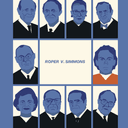
The theory of the modern death penalty is that it is to be reserved for the “worst of the worst” offenders. In 2005 the U.S. Supreme Court determined (Roper v. Simmons) that those under age 18 at the time of their crime were less culpable than older defendants and should be excluded from the possibility of execution. However, a recent paper by Hollis Whitson (l.) argued that scientific research on older adolescents implied that the Court’s analysis should also apply to those under 21. Whitson cited neuroscience research showing, “that older adolescents (including 18 – 20 year-olds) differ from adults in ways that both diminish their culpability and impair the reliability of the sentencing process.” Moreover, youths under 21 are treated as minors by numerous state and federal statutes, including liquor laws, inheritance laws, and eligibility for commercial drivers’ licenses. Another problem highlighted in the paper is that minority youth suffer from the application of this punishment more than white youths. From 2000 to 2014, 60% of those executed for crimes committed by 18 – 20 year-olds were racial minorities, while only 40% were white. For defendants aged 21 and older, the reverse was true: 40% of those executed were minorities, while 60% were white.
Whitson recommended further research on the issue, concluding, “Now it is time for the social scientists and lawyers to bring their skill to the research effort, and join the work already in progress. Only in this way can we see the day when we can consign to the dustbin of history the bizarre practice of execution of persons who were but teenagers and youths under the age of 21 at the time of the offense.”
(H. Whitson, “The Case Against Execution of People who Were Youths Under the Age of Twenty-One Years Old at the Time of the Offense,” July 2014). Whitson is a partner at Samler and Whitson in Denver. See Juveniles, Studies, and Race.



